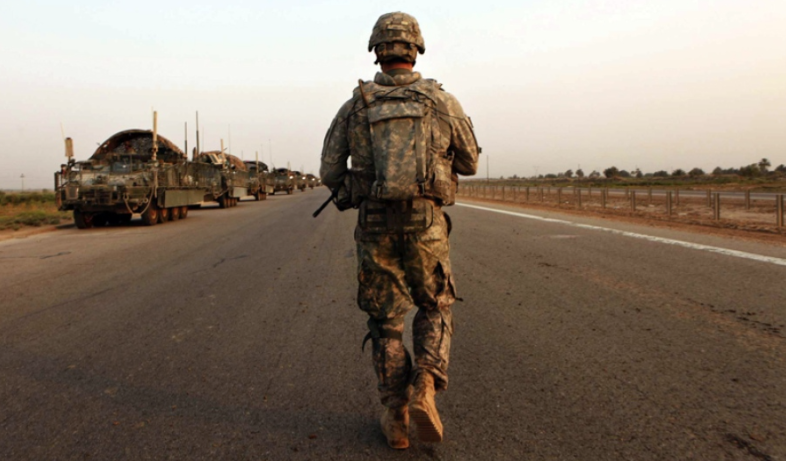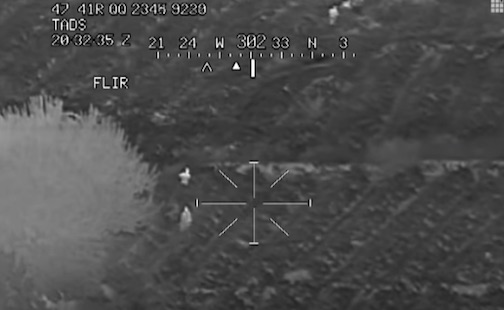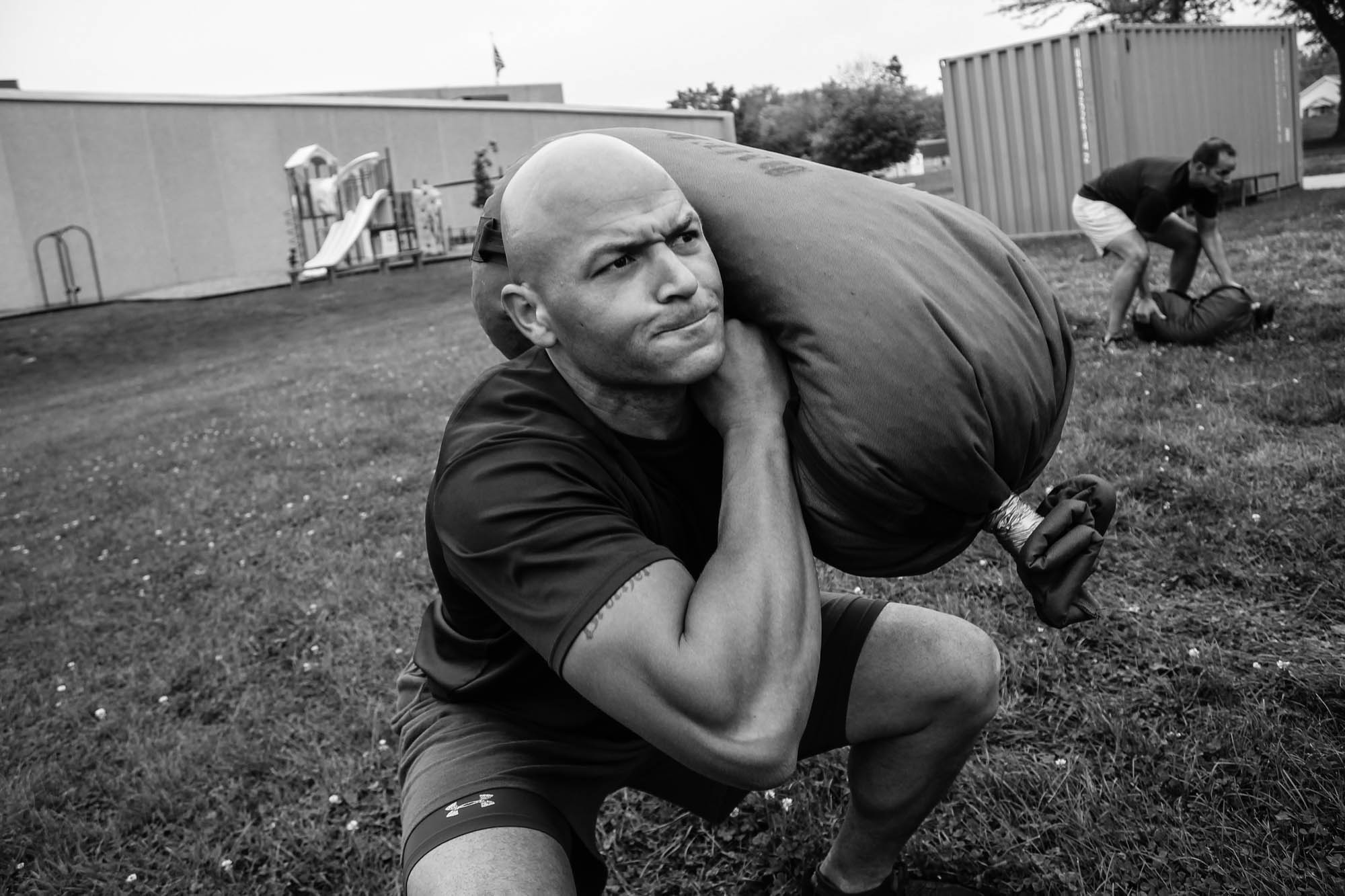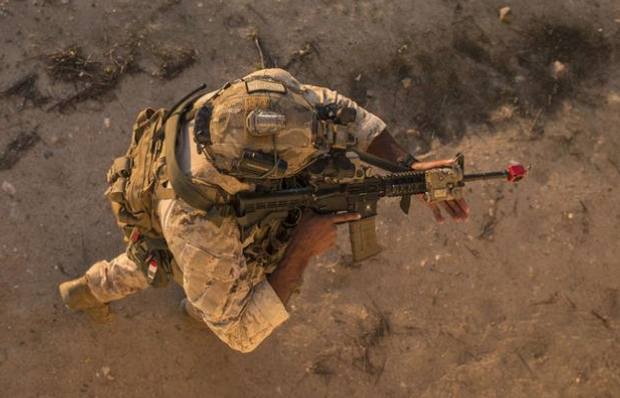by James Thompson
This is a follow-on to the recent MTI articles “The Military – Should I stay In?”, “Why I’m Getting Out – An Army Major”, and “My Struggles In Retirement – A Former Fire Captain.”
The decision to finally get out (separate or retire) from the military usually comes not from one single event (unless medical) but from a string of multiple stresses piling up on top of each other.
Getting to a senior level in the military takes an immense amount of sacrifices. Just being tactically proficient is unfortunately not even close to enough. You have to get advanced degrees (which often don’t have to have anything to do with doing your job), you have to execute remote tours where you’re away from your family, and you have to serve in staff tours where you are not flying and sit behind a desk somewhere. And you must move. A lot. In the military, we moved 24 times in 30 years. Forcing a family to suffer through all that is incredibly selfish. It builds resilient kids, but as they start getting older, it becomes significantly more difficult to leave them for deployments and each day for long work hours. You start missing recitals, athletic events, and other life events, and it really starts to grind on your soul. But you persevere because that is called “serving”.
And so there I was ……
….. in the middle of Afghanistan on my eighth combat tour, and my oldest son asked “Can we stop moving? I am tired of having to make new friends.” That was the tipping point, and we decided enough is enough. The next day I began the process to separate after 22 years of Active Duty and move over to the Guard.
Unfortunately, I got my first hard lesson that the grass was not greener on the other side. My Guard tour was plagued by multiple issues…the things that start to annoy you on Active Duty are only exacerbated in the Guard. As a few examples – I was given even less resources to make the mission happen, it took twice as long to get any people into the unit whenever we had turnover, and the politics were significantly magnified. We were forced to perform missions in some non-logical remote geographical places “because the Senator said so.” And in the end, I had a Guard commander that told me point blank, “your mission is to fail. We have to fail so they give us more money.” I was aghast…I was now supposed to try to fail? Now obviously much of this frustration was my own reaction to the circumstances. Many people make a great career in the Guard, but my experience was different.
After much reflection, I concluded I was not happy in that time and place. I said to my wife “something has to change. I just can’t do this anymore.” So, I did what I thought I needed to and retired. And that was supposed to fix all the problems, right?
In the first two header articles, the authors list several main considerations of why they might or might not get out of the military. And as they both point out; it is exceedingly difficult to make that decision to pull the ejection handle and leave…there is just so much you do not know! I will present a hindsight viewpoint on three reasons I suggest in hindsight you should not use to justify getting out of a profession.
“The Army doesn’t allow me to live long-term in a place I love.”
We thought this same thing (of the Air Force). We had bought some acreage in Arizona and we knew we would build our “forever house” on that land once we retired. There is an enormously powerful draw enticing you to get out of the military so you can “grow roots”.
But what is strange when you get out is suddenly you have a choice for the first time. Many list this as a reason to get out. But this can be scary…and can lead to some indecision because we just are not experienced in choosing where to live. Since leaving Active Duty, we have now moved three times in four years. The first move was our own decision once we got a better lay of the land while we built our “forever house”. The second move was into that “forever house”, and the third move was out of that “forever house” because of COVID and due to furloughs and shutdowns. We had to downsize to get a lower mortgage payment.
So, do not anchor all your thoughts on being able to live long-term in any location. After talking with many of my co-workers, they have all moved several times throughout their lives due to corporate mergers, layoffs, furloughs…this is nothing new to them either. In retrospect, I wish we had not bought the land, nor used the forever house as a draw to get out. Moving and ripping out those dreams of the forever house has caused significant angst and emotional difficulty. If you are happy as a family unit, it does not actually matter what your address is. Change it as many times as you need to…it still changes after you get out.
“The Mission: Most importantly, it’s the close connection that exists between the work I do and the end result.”
As far as “the new mission”, I have now started my fourth job since leaving Active Duty. I had heard in the Transition Assistance Program (TAP) class that on average someone leaving the military goes through three jobs before they land the new career they stay with. At the time, I completely chaffed off the statement. I was going to the airlines, and they were going to call that night!
Going through a job search and interview process is extremely stressful when you have not done so for over two decades. I ended up getting well past the start of my terminal leave before my first interview happened. And that was almost six months after I had submitted my first applications, and they would not start me in class for at least four months after that! I ended up working for three different airlines before I landed at a full-time airline pilot position that stuck. Until COVID struck, and then I found myself in the job interview process again.
I now am working at my fourth company – an engineering firm. I had to leave behind the entire premise of what I thought I would be doing and move to an entirely different world. Fortunately, I had the education and expertise to be able to do so. Never shut a door or opportunity for free education – you never know when you might have to dive right through it again.
Just know that when you leave the military, the first, second, and likely third job opportunity that you have might not be the one you will stick with. You must remain extremely flexible with multiple options for where you might end up. Preparing for interviews can easily take a full year, so if you are not ready, do not pull the ejection handle yet. Odds are the end-state will be nothing like you expected.
“From a purely financial standpoint it makes sense for us to stay in the Army. The financial security and freedom that retirement provides is alluring.”
After passing 20 years in the military you start realizing that each day you are working for less and less of your pay. This will even be more prevalent earlier as the new 12th year retirement phased plan has been in effect long enough to meet current day separation/retirement decisions. At some point, you start calculating what your pay could be if you were to “double dip” and get that second paycheck in addition to a retirement check. But no matter what you do, you need to massively prepare financially for the day you retire or separate from the military (or any profession). As we reached our military sunset, we had dutifully saved almost a half-year’s salary for the transition, and thought we were prepared.
In the case of the airlines, the first year takes you to about two-thirds of your former salary, even with the retirement paycheck. To make matters worse, due to some poor timing decisions on our part, we were also building a house as we started the transition. Of course, as most projects go, it went over budget and behind schedule. About nine months into the retirement, we found ourselves with our planned savings wiped out and over $40,000 in credit card debt and growing.
When you find yourself facing such a scenario after decades of a steady income, it is a scary position indeed. We had to make an exceedingly difficult decision to sell the “forever house” and downsize…back to living well within our new means. The disappearance of the financial security and freedom of a guaranteed paycheck while in the military or government service is a HUGE point that you must plan for well in advance. Money does not solve everything, but not having it turns inconveniences into major problems. Do you have six months of salary readily accessible? Do you have a large emergency fund for when those inevitable home or car repairs hit you in your first month of terminal leave? If not, do not step away from that nice paycheck comfort blanket quite yet.
Struggles in Retirement
The third header article is about a firefighter’s struggles after retirement. I think the struggles are very similar for any professional leaving a career. To supplement Joe Hogan’s article, I present four areas that I find have been the toughest for me to deal with since retiring from the Air Force for you to consider before you make such a decision.
You are not (as) important anymore.
Once you are done leading, as you start your new job, you are most likely going backwards in stature. Perhaps you are no longer leading people, or you are not in charge of projects anymore, or you are now junior to people way younger than you. At TAP they suggest you might be backing up about the equivalent of 12 years compared to your similarly aged co-workers as you leap into a new career. In the airlines, for example, you find yourself as a First Officer flying for a Captain that might be a decade younger than you. I have recently found myself transitioned from being a Wing Commander in charge of 4,500 military professionals to overseeing nothing but paperwork as an entry-level engineer. I am working for some really smart people indeed, but they are about ten years younger than me. This can be a very mentally tough situation to be in if you are not prepared.
I definitely find in military retirement and starting a second career that I must remind myself the activities I now enjoy (and not my work status) is what leads to the happy life. As much as you think you might have it wired before you leave the military (or any profession), I guarantee you will find days, times, or events where you make difficult mental comparisons to your previous life.
Work/Life Balance
When you first depart, giving up that military cell phone that rings at two in the morning with only bad news is a beautiful moment! Your email traffic fades from 200 a day to maybe 20 on a good day. Your interactions with hundreds of people dwindles down to about 5-10 at a new job. And your workdays go from 12-14 hours a day and some significant investments on Saturdays and Sundays to watching that clock each day, waiting for the 8th hour to arrive. At first, having more time serves as a welcome break, but after a while, you start looking for things to do, and you get…bored. This is extremely hard for high work-performing individuals to deal with, and if you are not mentally prepared with a plan of action, it can catch you by surprise.
Fortunately for me, two things have really helped me move forward during this phase. When I once mused “what the heck am I going to do with all this time?” My wife (#1) smartly responded “duh, do another Ironman.” Fitness (#2) is always a good time filler! And signing up for the biggest thing out there is a great way of filling the work/life balance void. Make certain you have a plan to fill your time before you decide to get out.
You are not “Serving” anymore
Enduring all the pain of deployments, long workdays and “mandatory training” is just part of the job when you are serving a higher purpose. Protecting freedom is no doubt one of the highest service callings that exists. But when you leave the military and “the serving” stops, feelings of depression and self-doubt are found around every corner. For example, if you happen to drive onto a military base, or see a posting by a friend that is still serving on Facebook, it can almost overwhelm you with emotion. For me, some of the hardest days were Memorial Day and Veteran’s Day. Coming to grips that you are not “serving” any more can be exceedingly difficult for even the toughest of individuals out there.
I quickly found I needed some way of filling that service void. I have taken on working as a volunteer Scoutmaster in the Boy Scouts, which takes quite a bit of time, and helping 50 youth learn about life skills and leadership is extremely rewarding. I would highly encourage you to not leave the service until you have a plan for what you’re going to do with your extra time, and how you will serve as a volunteer somewhere. Without this in place, you will find a void that can become dangerous if not addressed.
Fatherhood Difficulties
Fatherhood in the military is difficult and motherhood is even more difficult in many ways that the second article points out. Dealing with normal family issues is greatly magnified when you must pick up and move to a foreign country. Add deployments, of course, and you now have a complexity that exacerbates any family issues. There are lots of resources while in the military to cope with these issues – the Airman and Family Readiness Center, for example, puts together great programs to help Air Force families. We used many of their programs to help our family become stronger, but they are not as readily available once you leave the gate for the last time.
To complicate matters, fatherhood does not come with a checklist, and it most certainly does not come with an emergency procedures checklist. You can try to learn by experience, but then the darn kiddos change and grow up. As babies, it is frankly simple (though it did not seem so at the time!) The checklist to solve issues includes food, water, change diaper, change scenery, get over the fact they cry…or join them. As a newborn parent, you just do not sleep, run through the checklist, and lather, rinse, repeat. Then they get to be 6-12 years old, and these are the best years…you are a demi-god and virtually cannot go wrong as a dad.
But when your children become teenagers, the world suddenly goes inverted. You try to teach them about all the dangers out there and the great things they can accomplish, but they suddenly get things called attitudes. And then hormones kick in and they try to become the alpha, testing the envelope to see where they can push their limits. Now imagine adding to this situation the chaos of separating from the military and a national pandemic, and the pressure cooker starts to boil over.
Unfortunately, my own personal response to people pushing against me, due to years of military training, is to discipline or in extreme cases, put people that disobey me into jail. But that obviously does not work with your kids. So, I fall back to my senior cadet days where you influenced the junior cadets by yelling. When I say yell, I mean a full-on tirade. And I acknowledge that is a horrible thing for a father to do.
My kids are awesome, and, of course, as any teenager, they respond with full on sarcasm, and quip “Dad is being ‘kind and benevolent’ again.” And I resolve to never yell again…until I do. Inevitably, they test the envelope when I am tired, or sore from a workout, or late with a deadline from work, or under financial pressure or…the list goes on.
When you sit back and reflect on a situation that you know is bad, acknowledging where you are messing up is the first step. And ultimately, as I reflect, I have developed two main reasons why I often jump to yelling.
First, I think I am taking out some of the stresses and angst of leaving the service out on some of the smallest provocations from my children. When you are already stressed, your reactions are not calm and measured…you go over the right edge of the stress curve, and you can fly off the handle when you otherwise might not.
Second, I made the decision to get out of the Air Force because of my kids. I did not get out because of me, my abilities to deal with the increasing task loads, or the pressures involved. I got out because my kids were having difficulties moving.
While this might sound admirable, in many ways, I regret that decision.
I miss the people. I miss the mission. I miss the adrenaline. I miss the thrill of leadership. I miss being able to help people and serve. I miss making decisions and having them stick.
Upon deep reflection, I believe subconsciously I am reflecting these feelings of regret and longing upon my children as “the source” of me getting out. I miss the military and deep down, I unfairly blame my kids. As selfish and wrong as this is, admitting this feeling makes it easier for me to work towards a solution.
In retrospect, I realize that your family is always happier if you are happy…make the decisions that support both.
So, my hindsight advice is do not leave the military because you are not living in your “forever house.” Do not leave because you think you can make some better financial gains because this still may not lead to “the happy life.” Do not leave because you are working too hard and are tired, take some vacation instead!
Leave the military because you personally do not feel the desire to serve anymore and have already found a new way to serve. Leave because you have a plan (with backup options) in place to get to a better, more rewarding profession that you personally will enjoy more.
And most importantly, only leave the military because you are doing it for you, first and foremost, because that is what will provide a long-lasting source of happiness that lets you cope with everything else.






